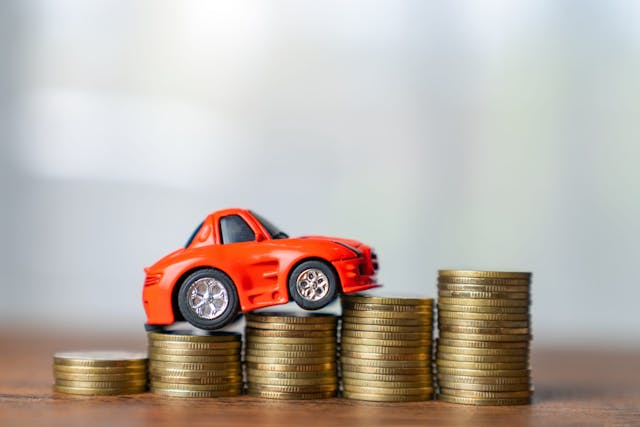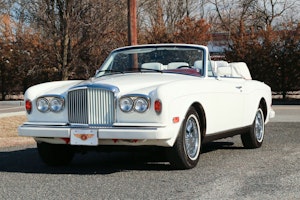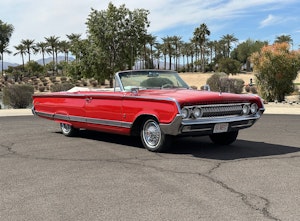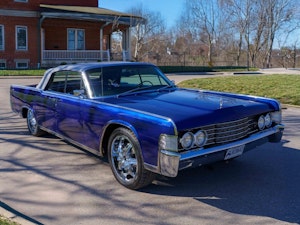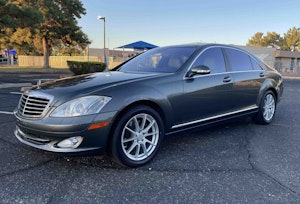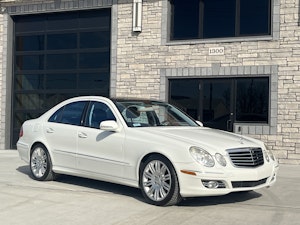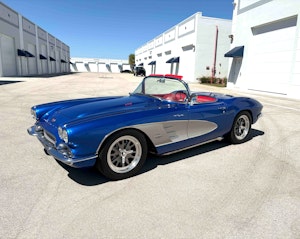Media | Articles
The State of the Economy: Collecting cars and real assets amidst the rush of inflation
Juan Manuel Fangio, the Argentine race car driver who dominated the first decade of Formula One competition, is quoted as saying “to finish first, you must first finish.” If there was ever a year to dust off that quote and apply it to the economy, it was 2021.
The past year was packed with events both investors and policymakers hate; political turmoil, a severe imbalance between supply and demand, labor shortages, inflation, and a public health crisis that just won’t quit. And yet, you’ll struggle to find a year where the S&P 500 set more daily records and the Dow Jones Industrial Average showed such resilience in the face of staunch headwinds.
Those hoping obstacles will get a bit easier to circumvent in 2022 were dealt a tough set of facts in the year’s first couple weeks:
- Inflation, as measured by the consumer price index that tracks a bundle of goods – ranging from gasoline to groceries – rose at the fastest pace in December since the summer of 1982.
- Jobless claims—a key measure of labor availability—are near the lowest levels since 1969, even as the Omicron variant wreaks havoc on public health. Normally, consumers benefit when unemployment is low, but as anyone either hiring workers or patronizing a local business can tell you, the current worker shortage is a major problem.
- Global supply chains, meanwhile, are surely as tangled as they’ve been since, well, ever.
- Consumer sentiment, a metric measured by the University of Michigan, fell in January to its second-lowest point in a decade. Put simply, smiles fade as prices shoot up on standard consumer goods.
In Fed We Trust?
These developments offer plenty of fodder for headline writers hoping to herald yet another crisis, but most leading economic experts aren’t panicking. Why? The 2022 corporate earnings season is off to a healthy start – indicating underlying business conditions (including demand and hiring) are strong. Also, experts are betting Washington has the macro-economic situation under control.
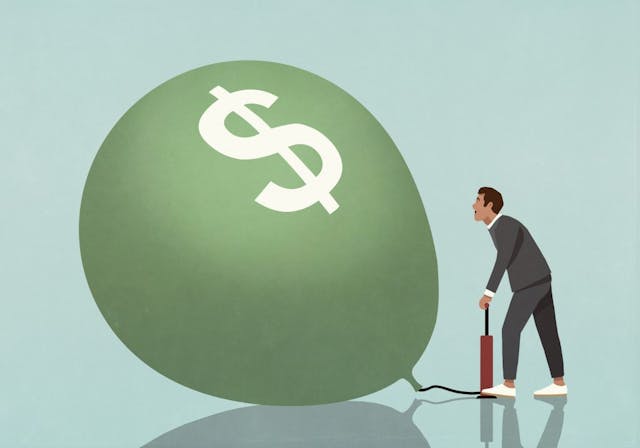
“I think the one thing we can be fairly confident of is that the Federal Reserve is on the case,” Ford Motor Co.’s chief economist Emily Kolinski Morris said in an interview. She claims the Fed’s been cautious about using its “fairly blunt instruments” – stuff like quantitative easing and interest rate policies – to aggressively influence the economy concerns in recent years, but Chairman Jerome Powell has recently said it won’t let the situation careen into a ditch.
“We will use our tools to support the economy and a strong labor market and to prevent higher inflation from becoming entrenched,” Powell said in congressional testimony in mid-January. The Fed is expected to raise rates three or four times this year.
There are two things to remember when considering Powell’s promise.
First, timing is important. While policymakers have proven they can move fast during a crisis, they must tread lightly during a recovery. Continue flooding the economy with stimulus and you may disincentivize people to reenter the workforce or simply exacerbate inflation. Raise interest rates too much, too fast, and consumers may dial back spending in favor of savings.
The second factor to consider is that the Fed does not have total control. Most economists agree inflation, for instance, is disproportionately influenced by supply chain problems that stem from the pandemic, and policymakers like Powell can’t solve them. It is not until current supply chain kinks are ironed out, that price increases will ease. Research firm Oxford Economics said with every infection wave stemming from a new variant – such as Omicron – comes new bottlenecks for supply.
“If other suppliers are unable to ramp up production as the original bottlenecks are unblocked, new binding constraints may emerge,” the firm wrote in an investor note published Jan. 17. Even if semiconductor shortages ease and new car production increases as a result, for instance, other challenges – such as more hiccups at ports – could deal another setback.
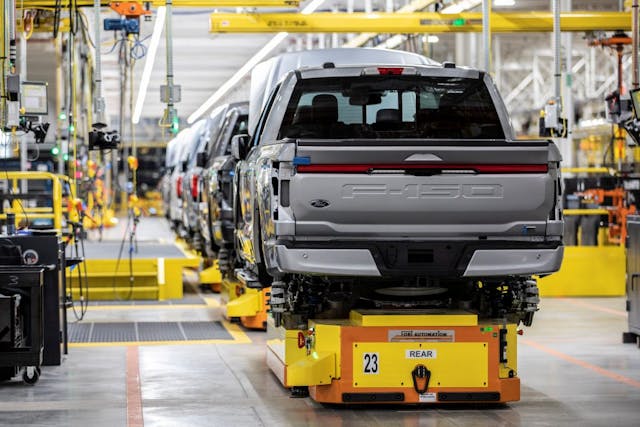
Nevertheless, “supply chain pressures will ease from here,” Oxford Economics predicts. In other words, the worst may be behind us.
Another factor the government can’t entirely control are labor cost increases, which also contribute to inflation. Higher hourly wages, employee shortages and rising benefits costs drive up the price of goods, essentially acting like an additional tax on consumers.
Economists for years have been estimating wage inflation has actually lagged behind price inflation (incomes aren’t growing fast enough to keep up with rising living costs), but there was no clear inflection point until COVID-19 triggered trillions of dollars in direct stimulus going into the pockets of everyday Americans. This lowered overall dependence on wages, and increased negotiating power or even a willingness to exit the workforce.
Many, including JPMorgan CEO Jamie Dimon, see 2021’s 4.7% overall average pay increase to an average of $31 an hour as well deserved, but someone has to pay for it. Today’s abrupt increases (whether they be wages, house prices or gasoline prices) act as a shock to the system, meaning they could take a lot longer for the economy to absorb.
Dimon said in a conference call with analysts that shareholders could be among those most squeezed by higher pay packages because higher costs in turn squeeze margins unless they are passed off to clients. Inflation, he said, will “hopefully” recede this year, but “wages and housing and oil are not transitory,” meaning they’ll stay elevated for a longer period than other goods and services.
‘A Very Crowded Small Party’
All the hand wringing aside, people have a lot of money to spend and, as 2022 gets under way, are showing a ravenous appetite to buy. Dave Magers, CEO of Mecum Auctions, said in an interview this was on full display in Kissimmee, FL during the first month of the year.

Magers said buyers and sellers are pouring into the market at levels that were elevated shortly after the pandemic broke out nearly two years ago. Magers said 2021 represented a boom for “hobbies of passion,” with Mecum auctions notching a record $578 million in sales. Kissimmee’s recent auction sent the tone for a potentially better year, with the Top 10 sales all exceeding $1 million, compared to seven above $1 million a year ago.
Whereas supply constraints may be limiting availability of certain items, collectible car availability is up. Magers said the elevated prices buyers are willing to pay has attracted sellers to put quality cars on the market, with 3,500 cars offered at this year’s auction compared to 2,400 a year ago.
The spending spree isn’t confined to enthusiasts. Recently released data from the Federal Reserve and Moody’s Analytics shows consumers’ revolving credit levels and bankcard debt outstanding are at their highest levels since March 2020.
People were forced to save money early in the pandemic as vacations, commutes, nights out, and hotel stays dried up. These were “forced savings,” said Kolinski Morris, and they proved to be a fad. As time went on, people simply shifted where they wanted to spend their money, which exacerbated supply shortages in certain product categories as people shifted away from spending on certain experiences and services.
Prior to the pandemic, she said, “there was a party going on and you had these two big rooms. Suddenly, one room closed and most of the people were forced into the [one remaining] room. What you’re left with is a very crowded small party.”
So, what’s an enthusiast and collector to do in this period of uncertainty? For starters, recognizing that spikes in inflation are most toxic to those with fixed incomes; if you haven’t been forced to dip into your existing fun-vehicle slush-fund, you’re already ahead of the game. The values of collectibles and real assets of all types usually increase during periods of inflation, so now might be the time to buy that Porsche or Datsun you’ve wanted for a while.
Remember—demand for collector cars will continued to outpace supply, and if inflation continues unabated, both new and existing enthusiasts will bid against an increasing stream of cash-rich investors joining in the market looking for somewhere to park their cash. Consider selling off assets—especially that dusty project car—you might deem overvalued at the moment, and putting that windfall to better use in either something more stable or a different classic you’ve had your eye on.
***
Marketplace
Buy and sell classics with confidence
Check out the Hagerty Media homepage so you don’t miss a single story, or better yet, bookmark it. To get our best stories delivered right to your inbox, subscribe to our newsletters.
